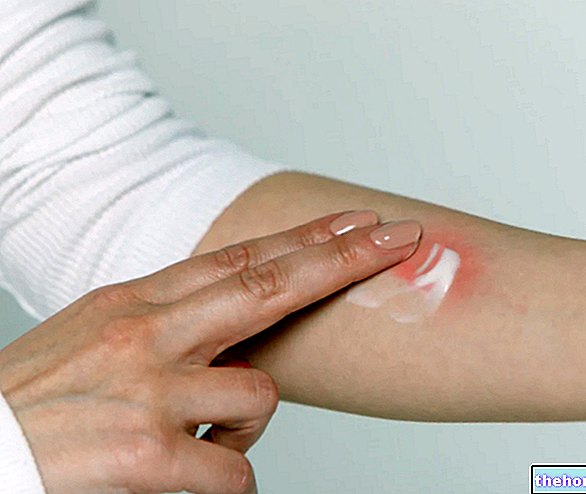
What is Ibrance - Palbociclib and what is it used for?
Ibrance is an anticancer medicine used to treat locally advanced or metastatic breast cancer (that is, it has started to spread to other parts of the body). Ibrance can only be used when cancer cells have receptors for certain hormones on their surface (HR- positive) and do not produce abnormally large amounts of a receptor called HER2 (HER [human epidermal growth factor] negative). Ibrance is used as follows:
- in combination with an aromatase inhibitor (a hormonal medicine for cancer);
- in combination with fulvestrant (another hormonal medicine for cancer) in patients who have previously been treated with a hormone medicine.
In women who have not yet reached menopause, a medicine called a luteinizing hormone releasing hormone agonist should also be given.
Ibrance contains the active substance palbociclib.
How is Ibrance - Palbociclib used?
Ibrance can only be obtained with a prescription. Treatment should be initiated and supervised by a physician experienced in the use of antineoplastic medicines.
Ibrance is available in capsules (75 mg, 100 mg and 125 mg). The recommended dose is 125 mg once daily for 21 consecutive days, followed by a 7-day break to complete a 28-day course of treatment. The capsules should be administered with food at approximately the same time each day. Treatment should continue as long as the patient benefits and the side effects are tolerable. If the patient experiences certain side effects, it may be necessary to suspend or discontinue. treatment, or reduce the dose.
For more information, see the package leaflet.
How does Ibrance - Palbociclib work?
The active substance in Ibrance, palbociclib, blocks the activity of enzymes known as cyclin-dependent kinases (CDKs) 4 and 6, which play a key role in regulating how cells grow and divide. In some types of cancer. , including HR-positive breast cancer, CDK 4 and 6 activity is increased, which helps cancer cells multiply uncontrollably. By blocking CDK4 and CDK6, Ibrance slows the growth of HR-positive breast cancer cells.
What benefit has Ibrance - Palbociclib shown during the studies?
Ibrance has been studied in two main studies involving women with HR-positive, HER2-negative breast cancer. In both studies, the main measure of effectiveness was how long the patients lived without their disease getting worse (progression-free survival).
The first study involved 521 women with metastatic breast cancer that had gotten worse after treatment with a hormonal drug. They received Ibrance and fulvestrant or a placebo (a dummy medicine) and fulvestrant. Women taking Ibrance and fulvestrant lived for an average of 11.2 months without their disease getting worse compared to 4.6 months for women taking placebo and fulvestrant.
The second study involved 666 postmenopausal women whose breast cancer had begun to spread and who had not yet received cancer treatment. They received Ibrance and letrozole (an aromatase inhibitor) or placebo and letrozole. Women taking Ibrance and letrozole lived an average of 24.8 months without their disease getting worse compared to 14.5 months for women taking placebo and letrozole. .
What are the risks associated with Ibrance - Palbociclib?
The most common side effects of Ibrance (which may affect more than 1 in 5 people) are neutropenia (low blood levels of neutrophils, a type of white blood cell that fights infection), infections, leukopenia (low white blood cell count), tiredness, nausea, stomatitis (inflammation of the lining of the mouth), anemia (low red blood cell count), alopecia (hair loss) and diarrhea.
The most common serious side effects with Ibrance (which may affect up to 1 in 50 people) are neutropenia, leukopenia, anemia, tiredness and infections.
For the full list of side effects reported with Ibrance, see the package leaflet.
Ibrance should not be used by patients who are taking St. John's wort (a herbal preparation used to treat depression). For the full list of restrictions, see the package leaflet.
Why has Ibrance - Palbociclib been approved?
Ibrance has been shown to extend the time patients live without their disease getting worse from 6 to 10 months on average, which is considered to be of clear clinical value. Regarding safety, the main risk is neutropenia, which is a well-known risk of many anticancer medicines and is considered manageable.
The Agency's Committee for Medicinal Products for Human Use (CHMP) therefore decided that Ibrance's benefits are greater than its risks and recommended that it be approved for use in the EU.
What measures are being taken to ensure the safe and effective use of Ibrance - Palbociclib?
The recommendations and precautions that healthcare professionals and patients need to observe in order for Ibrance to be used safely and effectively have been set out in the Summary of Product Characteristics and Package Leaflet.
Other information about Ibrance - Palbociclib
For the full version of Ibrance's EPAR, please consult the Agency's website: ema.europa.eu/Find medicine / Human medicines / European public assessment reports. For more information about Ibrance therapy, read the package leaflet (included with the EPAR) or contact your doctor or pharmacist.
The information on Ibrance - Palbociclib published on this page may be out of date or incomplete. For a correct use of this information, see the Disclaimer and useful information page.


.jpg)

























